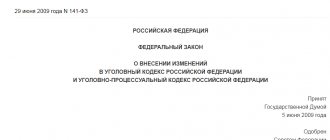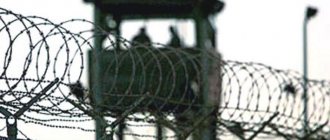The indictment is drawn up based on the results of the investigation stage. An indictment is a procedural document that records the circumstances, substantiates the evidence, and reflects the decision of the inquiry body to prosecute a person under criminal law. It also defines the limits of prosecution for sentencing.
Multi-channel free hotline Legal advice on criminal law. Every day from 9.00 to 21.00
Moscow and region: +7 (495) 662-44-36
St. Petersburg: +7 (812) 449-43-40
Article 225 of the Code of Criminal Procedure of the Russian Federation (indictment)
Inquiry is an abbreviated form of preliminary investigation conducted for many elements of criminal acts (93 elements established by the Criminal Code of the Russian Federation for 2022). Within 30 calendar days from the start of the investigation into the case, based on the results of studying the evidence and facts, the investigator who is conducting the proceedings on the criminal episode, in strict accordance with Art. 225 (Code of Criminal Procedure of the Russian Federation), formulates the charges.
The indictment under the Criminal Procedure Code is written concisely, simply and consistently. The content is presented in phrases that are understandable to a person of any level of legal preparedness. In this case, the official should use a minimum of complex professional terms.
The sample act contains the following points:
- The title of the document indicating the accused person (last name, initials) and the articles of the accusation.
- Information about the identity of the person brought to criminal liability (date of birth, residential address, employment information, marital status, etc.).
- Information about the victim (nature of harm, amount of damage).
- A consistent presentation of arguments confirming a person’s involvement in a specific crime.
- Evidence from the defense regarding the defendant's innocence.
- Article of the Criminal Code of the Russian Federation (part, points) of the charge.
- Content (description) of the criminal act (motive, place, method, etc.).
- A concise summary of all mitigating and aggravating factors.
- Address of the location of the investigative body, date.
- Details of the official who conducted the inquiry.
- The date the indictment was sent to the prosecutor.
Criminal procedural legislation establishes the duty of the investigator to provide an opportunity to a citizen suspected of participation in a criminal episode and his lawyer (defender) to study the case materials and the indictment. Familiarization of the victim or his authorized person is procedurally optional. However, upon written request, they also have the right to familiarize themselves with the official’s conclusions.
After familiarization, all interested parties put their signatures on a special protocol form.
The following obligatory certificates are attached to the case materials:
- on the period for conducting an investigation in the form of an inquiry;
- on the use of preventive measures (house arrest, recognizance not to leave, placement in custody);
- on the amount of procedural costs subject to reimbursement from the federal budget (in the case of inviting an appointed lawyer);
- on measures to respect the rights of dependents of both the accused citizen and the victim;
- list of material evidence.
The indictment, among other things, must indicate the volumes and sheets of the case containing significant information. The head of the investigation department checks and approves the accusation report. Next, the case materials with a resolution including the manager’s full name, title, position and date of approval are transferred to the prosecutor’s office.
What other documents are there?
- All documents from the “Conclusion” section
- Categories of all standard samples and document forms
What else to download on the topic “Conclusion”:
- Recommended forms of forms for registration of materials on technical condition control. Conclusion (Protocol) of measuring the radius and ovality of bent pipeline bends
- Recommended forms of forms for registration of materials on monitoring the technical condition of the pipeline. Conclusion on measuring the wall thickness of pipeline tees and tie-ins
- Sample conclusion form for the section “Engineering and technical measures of civil defense. Measures to prevent emergency situations” construction project, construction project of a civil defense facility. Form N 3
- Sample form of conclusion on the possibility of issuing a license with the right to develop the section “Engineering and technical measures of civil defense. Measures to prevent emergency situations” of the construction project. Form N 4
- Sample conclusion of the industrial safety examination of fire protection projects for coal mines and hazardous production facilities in the coal industry
- Important nuances when buying a company
- The process of transferring an apartment to another person
- US Visa Process
- Car selling process
- Garage construction process (from a bureaucratic point of view)
Commentary on Article 225 of the Code of Criminal Procedure of the Russian Federation
The indictment and the indictment have many common features and are close in nature.
The similarity of these documents lies in the precise recording of the progress of the pre-trial investigation and its results. The following document differences are distinguished:
- The subject of the investigation (the act is signed by the investigator, the conclusion is signed by the investigator).
- Composition in accordance with the Special Part of the Criminal Code of the Russian Federation (charges under the act are brought for crimes that do not pose a great danger to society).
- Structure (all facts in the act are presented briefly, the conclusion includes descriptive and operative blocks).
- Time limit (the actions of the investigator are limited to more strict time frames).
- Determination of status (the conclusion only describes information about the results of the investigation; signing the act transfers the suspect to the accused).
The difference between an act and a conclusion lies in the legal subtleties of the process. The significance of the final document of the inquiry lies in assigning the person the status of an accused before the judicial investigation, and the indictment confirms this.
Article 225 describes in detail all stages of filling out the charge form:
- decision on the sufficiency of the collected evidence (made by the investigator independently);
- delivery (sending) copies of the document to the suspect and his lawyer;
- clarification of the defense position (written comments, complaints, petitions);
- signing a protocol of familiarization of all participants in the investigation.
The final approval of the indictment means the presence of convincing evidence of the guilt of the subject of the crime. The official's preconceived opinion and unverified evidence most often lead to the return of the case from the prosecutor's office for additional investigation. The personal position of the investigator cannot influence the pre-trial investigation and judicial proceedings.
The indictment and the indictment are similar in content and form. The resolution is drawn up during an abbreviated inquiry procedure (for example, the citizen confessed to everything and actively contributed to the investigation). The document lists the facts and evidence of guilt.
In the process of reviewing the indictment documents, interested parties may submit the following requests:
- Recognize the evidence provided by the investigator as inadmissible.
- Carry out investigative measures to verify the accuracy of individual facts.
- Take additional steps to collect evidence confirming the person’s guilt.
- Re-draft the resolution, since it was made in violation of articles of the Code of Criminal Procedure of the Russian Federation.
In contrast to the act, the period for drawing up the resolution is 10 days. All types of indictment documents are accompanied by information about the witnesses who need to be questioned at the court hearing (last name, first name, patronymic, actual residential address).
Concept and general characteristics of the indictment
The indictment is the most important procedural document that completes the inquiry process and is more simplified compared to other types of final procedural documents. Please note that such a document is drawn up only by the investigator. It forms the main results of the investigation, which consist in bringing charges against a specific person or group of persons, and notes the evidence that confirms the above conclusions. It is important to know that the indictment of the inquiry is drawn up only by the official who had jurisdiction over the criminal case. It is possible to transfer jurisdiction, that is, a situation when a case is transferred from one investigator to another for any reason.
Procedural meaning of the indictment
Based on all of the above, we can conclude that the indictment is the most important part of the investigator’s work. It is this document that puts into a logical structure all the evidence received and the facts of the crime, based on which the court will be able to make a fair and correct decision. In addition, the indictment changes the legal status of a key participant from suspect to accused.
Where is the indictment sent after it is drawn up?
As we found out earlier, an indictment is an important and significant procedural document, which is why you need to know where it is going and what happens to it after it is drawn up. After familiarizing the suspect and the victim with it, the finished document is sent to the head of the inquiry agency, who studies it, checks for errors and omissions, and, if necessary, sends it again to the investigator. If everything is correct and there are no errors, then the document is approved by the boss and moves on to the prosecutor.
Decisions made by the prosecutor during the consideration of the indictment
One of the activities of the prosecutor in the field of supervision is the consideration of the indictment and the decision of the prosecutor based on its results. This power is established by Art. 226 Code of Criminal Procedure of the Russian Federation. Based on the results of the consideration of the criminal case, the prosecutor may make any of the decisions noted below.
- Approval of the indictment by the prosecutor and preparation of case materials for sending to the court, where it is subsequently considered.
- Returning the materials of the criminal case to draw up a repeated, more complete indictment, which in the future will meet the requirements put forward. The law establishes a period for re-drafting - 3 days. An extremely important aspect of work in this direction are the recommendations and comments of the prosecutor, which he notes. In this case, he coordinates the work of police officers and helps them draw up documents correctly.
- Returning the criminal case so that the officer has the opportunity to conduct an additional investigation. In this case, the period for conducting such an inquiry should not exceed 10 days. Such a decision is made when the prosecutor sees that the interrogator has closed his eyes to some questions and has not paid attention to important details.
- Termination of proceedings only when there are grounds for this provided for by the Code of Criminal Procedure of the Russian Federation. The law has a separate article that describes cases of suspension and termination of an investigation in a specific case. If the prosecutor establishes the presence of one such fact, the case is terminated.
- Sending a package of documents, which includes materials from the criminal case, in order to begin another type of investigation, for example, a preliminary investigation.
If the indictment is reviewed and approved by an employee of the prosecutor's office, copies are given to the accused and his defense attorney.
Indictment and indictment: differences between documents
The indictment is the result of an abbreviated investigation, which is based on the available evidence and the confession of the accused. In turn, as we know, an indictment is a procedural document that completes the inquiry process in a general form.
- To issue an indictment, you only need to perform those procedural steps that, at the discretion of the investigator, are sufficient to bring charges.
- The terms of the shortened inquiry, as the name implies, are more compressed than in a regular inquiry.
Everything else, including design requirements, is the same.
Checking the indictment by the prosecutor
After the indictment has been approved by the official - the head of the inquiry body, it, together with other materials of the prepared criminal case, is sent further to the prosecutor, because he is entrusted with the responsibility of monitoring the activities of the inquiry bodies. The prosecutor, in turn, must review and analyze the criminal case and the indictment for it within two days, and also, based on the results of the review, make one of the decisions established by the Code of Criminal Procedure of the Russian Federation, which we will note below.
Legal nature of the indictment
If we take into account the meaning of clause 2, part 1, art. 47 of the Code of Criminal Procedure of the Russian Federation, the indictment is of enormous importance in the progress of the criminal case. It is from the moment the document is drawn up that a person changes the status of a suspect to the status of an accused. First of all, this gives rise to completely new rights and obligations of a person, which is called legal status. The law reserves the right of the accused and the defense attorney to carefully read the document and, if any comments or amendments arise, to ask the investigator to add them to the document. A separate document is also drawn up, in which all notes are made and the familiarization process is described. The law also provides for the right of the victim and his representative to file a petition to become familiar with the essence of the indictment and all documents included in the criminal case.
Components of the annex to the indictment
As noted earlier, the appendix to the document is an important part, which is why it is necessary to know its components more specifically and completely. In accordance with the law, the following must be attached to the indictment:
- Information about the specific dates of the investigation.
- Information about the preventive measures chosen by the official. In this case, the time of their implementation is specifically indicated.
- Certificate of physical evidence - listing their names, quantity and serial number in the inventory.
- Certificate of civil claim, if any (if material or moral damage is compensated).
- A certificate of measures taken by the official to preserve property and ensure punishment in the form of a fine.








